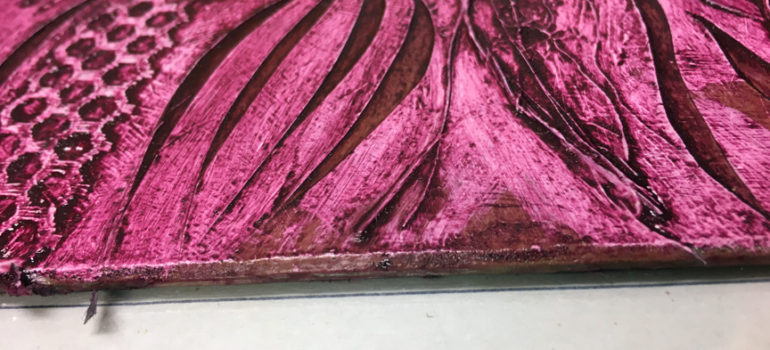Mary Woodworth‘s four night experimental workshop on collagraph plate and printmaking at Tiger Lily Press ended in an evening of pulling prints.
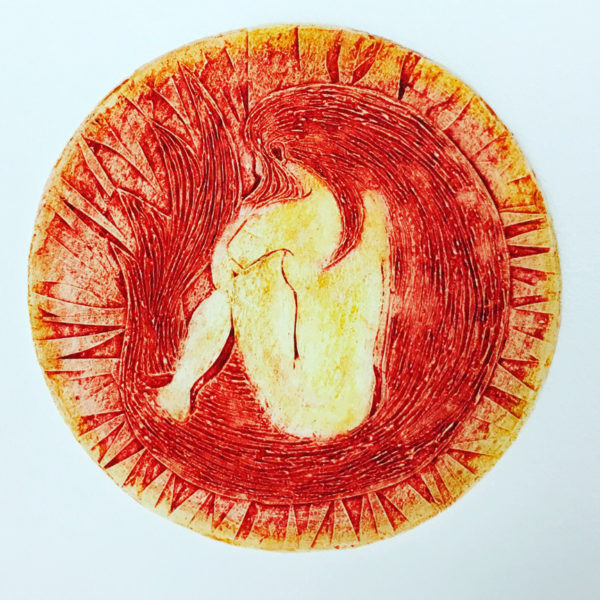
Wetting the paper (soaking and rolling between towels until just damp) allows for beautiful coverage and a really lovely embossing from textured collagraph plates.
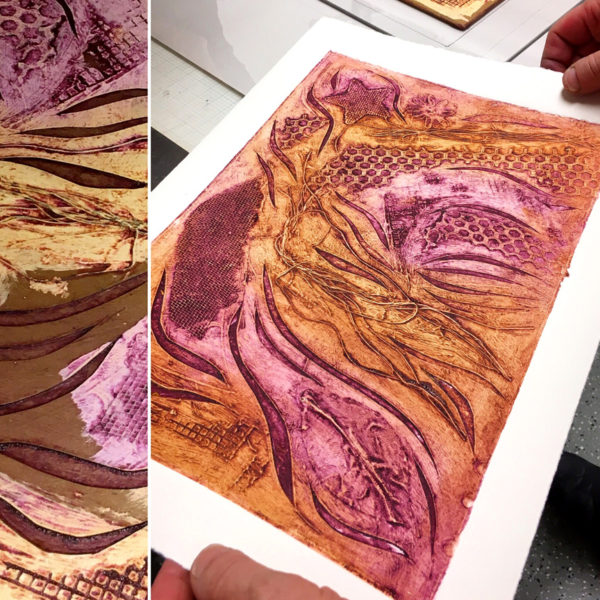
During the class, participants learned about mixing inks, choosing papers, making plates (building up, collaging, digging in, and sealing), wiping plates (and applying multiple colors—a la poupée), and printing them on the press.
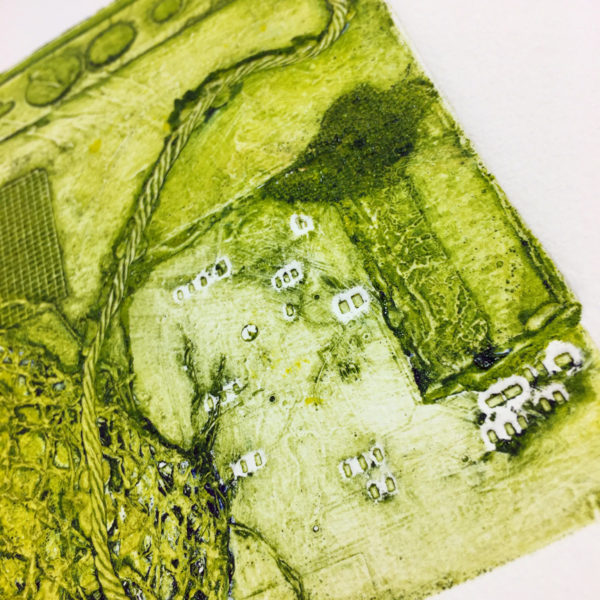
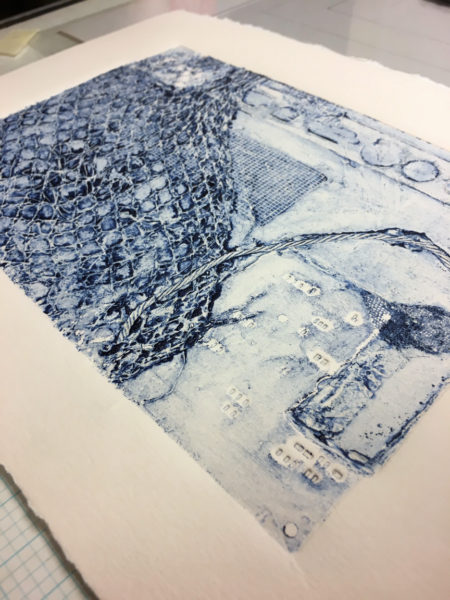
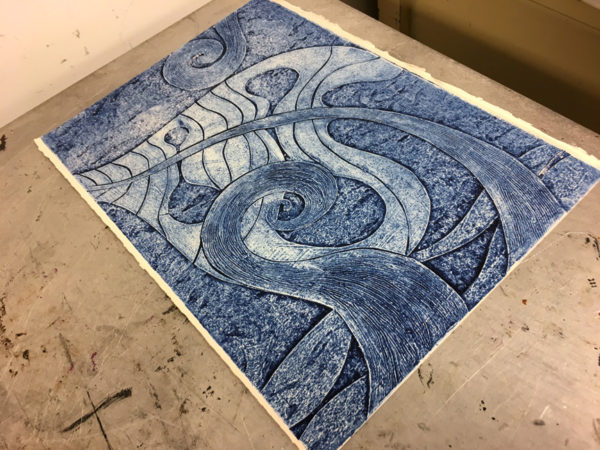
PLATES
Pictured below are some of the plates before inking, in the process of being inked, and during printing. Collagraph plates can be made from sealed paper or board, and texture can be made of anything that can safely go through the press without damage. Some favorites are cut paper, mesh from fruit or produce bags, lace, sandpaper, thread, and other fibers. Since this class used thick board (davey board works), several folks chose to incise with blades as well as build up texture.
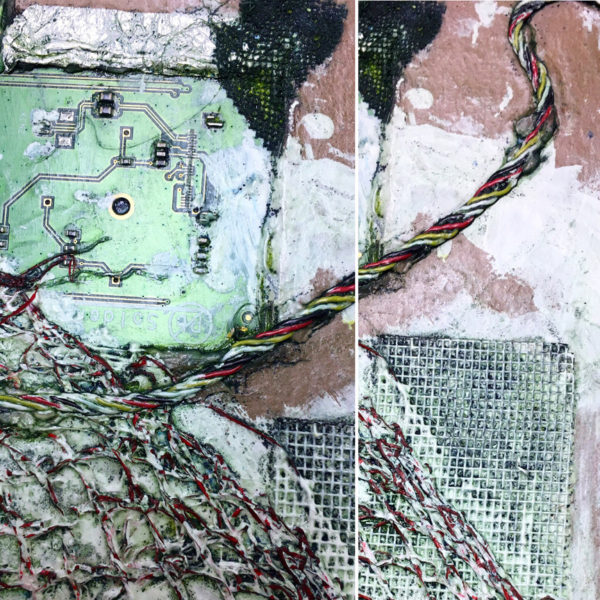
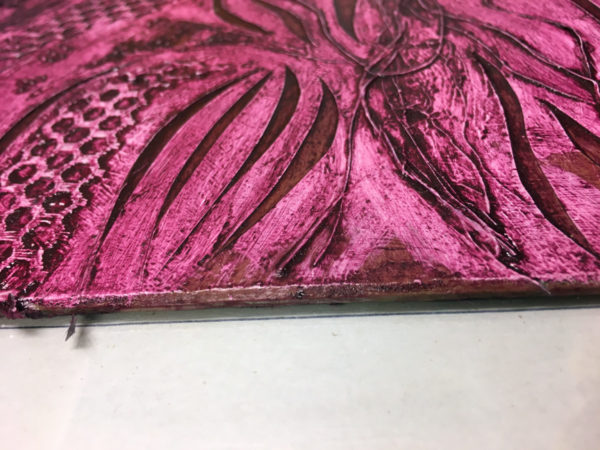
PRINTING GHOSTS
Part of cleaning the plate (and also making use of excess or remaining ink) is to run the plate through the press with prepared paper, but without inking again. This results in a ghost print, one that is usually much lighter (more ghostly) than the first print. Sometimes printers like to hand-alter these, but often alteration isn’t necessary.
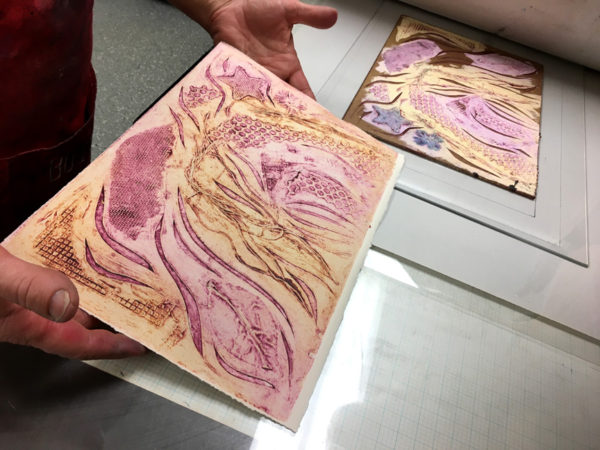
Getting Inky at Tiger Lily Press
Interested in learning about collagraphs or taking a class with Mary? You can contact us to be added to a list for notification when we have another session.
Want to see what we have in store for the future? Our list of classes is posted.
